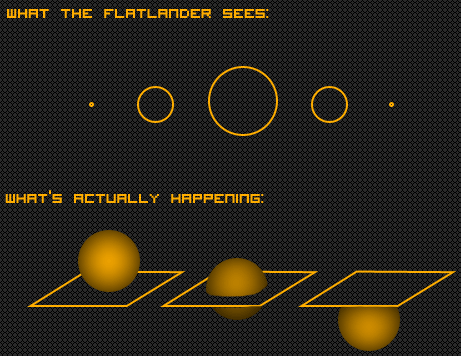Time
For time travel, time is the medium that we are talking about travelling in. Thus, we must have a good understanding of what time really is, and how it works. Not knowing what time is when time travelling is like not knowing what a road is when driving - bad idea!
Although. if someone were to ask you to explain, "what exactly is time?", you would probably have a hard time answering them.
In a sentence, time is "the indefinite continued progress of existence and events in the past, present, and future, regarded as a whole," according to The Oxford English Dictionary.
"Indefinite," huh? Well that wasn't very helpful.
» The fourth dimension
In the book, The Time Traveller, by H.G.Wells, The Time Traveller discusses with his friends:
"Nor, having only length, breadth, and thickness, can a cube have a real existence."
"There I object," said Filby. "Of course a solid body may exist. All real things-"
"So most people think. But wait a moment. Can an instantaneous cube exist?"
"Don't follow you," said Filby.
"Can a cube that does not last for any time at all, have a real existence?"
Filby became pensive. "Clearly," the Time Traveller proceeded, "any real body must have extension in four directions: it must have Length, Breadth, Thickness, and - Duration."
This is not a new concept. Time is widely accepted nowadays as "the fourth dimension" (although it is not "officially" the fourth dimension; it is a fourth dimension).
» Understanding the concept
Just as a movie is simply a bunch of 2D snapshots played back to back, time can be seen as simply lots and lots of 3D snapshots of our universe played back to back. We can visualise this by making our 3D world a 2D plane on a 3D graph, and representing the fourth dimension as the third axis on the graph. Thus:

Also, if we take a look at the lower dimensions; that is, 0D (a point), 1D (a line), 2D (a plane) and 3D (space), the fourth dimension can simply be seen as a line, with every point on that line being a slice (or "snapshot") of the 3rd dimension. We, as creatures of the third dimension, are simply moving along the fourth dimensional line: from past to future.
We cannot see this 'line', as this line is in the fourth dimension and we are but mere third dimensional creatures.
Let's imagine that there were 2D dimensional creatures called "flatlanders". These creatures, like us, would have length and width, but no height. What would happen if we were to push a third dimensional object (such as a ball) through their second dimensional world?

Essentially, what the flatlander sees are two-dimensional cross sections of the 3D ball. This is much like us in our 3D world - we see the fourth dimension by seeing 3D cross sections.
» Flow of time
If time is simply a line in the fourth dimension, why can we only go in one direction?
This is where I will introduce the Second Law of Thermodynamics: the entropy of a closed system will always increase.
What this means is that, in a closed system (e.g. our universe), the entropy (or disorder) must always increase. A broken wine glass will not naturally rearrange and then mend itself to form a glass again, just as a cold glass of water will not randomly go hot if left alone. This defines our "arrow of time"; that is, what direction we are travelling along our 4th dimensional line.
Shiny new glass » Shattered glass
Hot cup of coffee » Cold cup of coffee
Big Bang » Big Crunch
Past » Future

